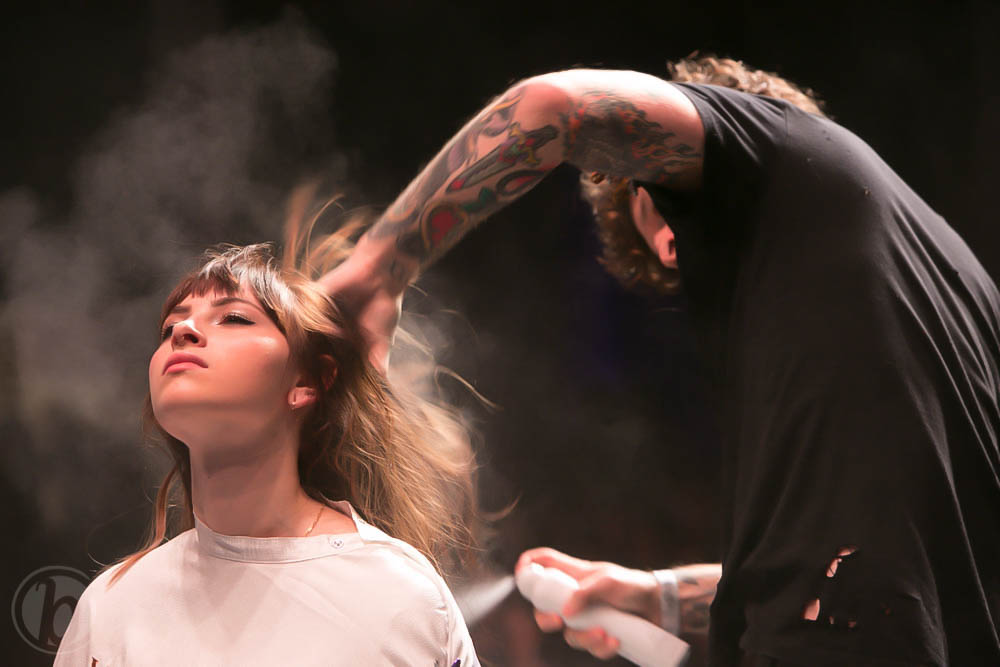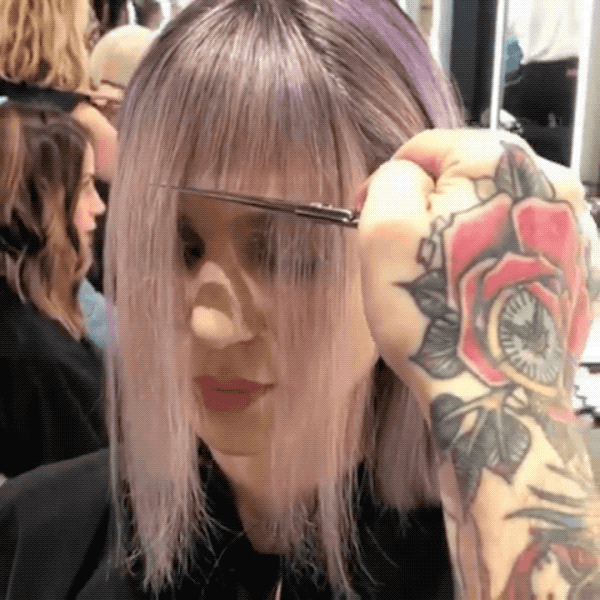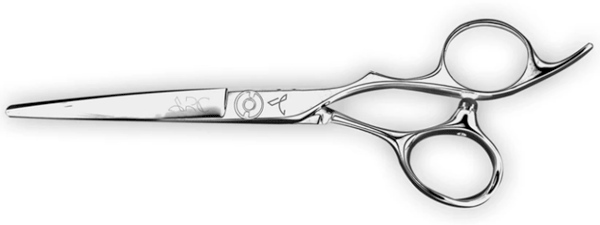3 Dry-Cutting Fringe Tips
3 Tips For Dry-Cutting Fringe From @buddywporter
You’ve seen dry-cutting all over Instagram and you want to try it on your fringe-wearing clients, now what? Before you blow it out, grab the scissors and get to work—give yourself a lil refresh with these tips from celebrity stylist, LA cutter and dry-cutting pro Buddy Porter (@buddywporter). From the blowout to finishing the fringe and everything in between, get the ✂️ tips you need to live your best life behind the chair!
But First, Why Cut Dry?!
“I cut my fringe dry because I like to neutralize and examine any cowlicks or growth patterns to see exactly what I’m doing as I’m doing it,” shares Buddy. This prevents having to compensate for elasticity and shrinkage later when the hair dries after cutting it wet. It also reveals natural texture to create a clear visual guide for creating the shape.
Products Used
1. Adjust Your Blowout For Different Fringe Types
Buddy always preps a dry cut by blow-drying and working through the hair with his hands. He then adjusts his blowout technique by letting the fringe type determine whether he also uses a round or flat brush. “Usually more blunt and straight fringe will be flat-brushed,” shares Buddy. “Whereas curtain bangs or face-framing [fringe], I like to see a bit more bend with a round brush.”
2. Dry-Cutting Curly v. Straight Fringe
Here’s the biggest difference when dry-cutting curly and straight fringe: Curls require a more visual process. “Curly hair is much more visual and usually cut with zero tension at natural fall,” shares Buddy. With naturally straight hair, you can also work with elevation and tension to achieve different fringes. Buddy always works with the 6.5-inch Master Series Paragon Sword by ARC™ Scissors because they don’t push dry hair. “You don’t have to worry about scissor retraction because of how sharp the blade is,” adds Buddy.

3. Talk To Clients: You’ve Got Fringe, Now What?!
Everything matters when deciding on fringe—the size of someone’s forehead, the hairline, density, texture, etc…but also, their lifestyle! Consultation is key. If someone’s hair texture is harder to style and they aren’t willing to put in the work at home, it won’t work well. If they work out a lot and want to tie their hair up everyday, they should opt for longer fringe and avoid shorter, face-framing or curtain bangs.
You should also show them how to use (and avoid overusing!) product on their fringe—especially for fringe first-timers who don’t understand the grow out process! Buddy always uses Virtue® Texturizing Spray to finish because it emphasizes the texture of a piecey diffused line and also gives the fringe a bit of hold.

Tap HERE to watch Buddy break down a textured lob + fringe!

Ready to use Buddy’s fringe cutting tips? Click here to purchase your pair of 6.5-inch Master Series Paragon Sword by ARC™ Scissors
More from
Virtue®
-
Awards Shows
2024 Golden Globes Best Hair & Beauty Looks
-
Barbering
How To Style The Biggest Men’s Summer Trends
-
BTC Hair Trend Report
Subtle Ombré is The New Balayage—5 Tips You Must Know!
-
BTC Hair Trend Report
Your Complete Guide To Color Blocking
-
BTC Quickies
5 Quickie Hair Cheats We Stole From Instagram
-
Styling Products
Hello Fall: What’s Inside This Season’s BTC Beauty Box
-
#ONESHOT HAIR AWARDS
The BTC Show 2022: 10 Things We Saw
-
#ONESHOT HAIR AWARDS
Breaking News: 2022 #ONESHOT Hair Awards Winners
-
Celebrity
The Best Hair & Beauty Looks From The Oscars 2022
-
Accessories
2022 Styling Trends To Know: Blowouts, Money Piece Braids + Hair Rollers
-
Balayage
15 Hair Color Trends You Need To Know In 2022
-
Haircuts
These Haircut Trends Will Be Everywhere In 2022
-
Celebrity
2021 Emmy Awards: The Best Red Carpet Hair Looks
-
Celebrity
Met Gala 2021: See The Best Celebrity Hair & Beauty Looks!
-
Celebrity
The Best Hair & Beauty Moments From The Oscars 2021
-
Haircare
Your Client’s Guide To Summer Hair Damage Repair
-
Haircare
Exfoliating Scalp Treatment
-
Coronavirus
Virtue® Announces New Salon Relief Fund & Affiliate Program
-
BTC Events
BTC “On Tour” New York City 2020
-
Blowouts
3 Blow-Dry Cheats For Volume
-
Celebrity
9 Hair How-Tos From The 2020 Oscars
-
Buns
Saoirse Ronan’s Micro Bangs and Twisted Chignon
-
Haircare
13 Treatments & Masks Your Clients Will Thank You For
-
Accessories
Charlize Theron’s Bold Diamond Part










